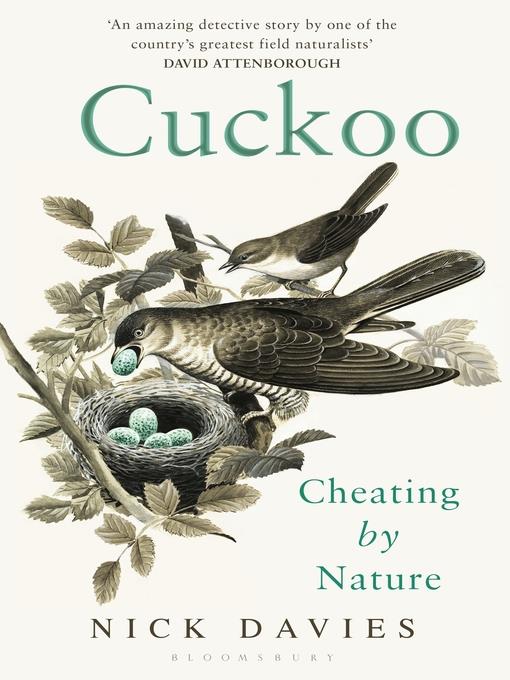
Cuckoo
Cheating by Nature
کتاب های مرتبط
- اطلاعات
- نقد و بررسی
- دیدگاه کاربران
نقد و بررسی

February 9, 2015
British field ornithologist Davies (Cuckoos, Cowbirds, and other Cheats) dials into the parasitic behavior of Britain’s favorite harbinger of spring, the cuckoo, as he details the “evolutionary arms race” between cuckoos and their hosts, which yields adaptations and behavior that seem exquisitely well-tuned, but sometimes incomprehensibly sloppy. He walks readers through Wicken Fen, his fieldwork site for more than 30 years, carefully observing the clever manipulations of cuckoos and their targets: reed warblers, wagtails, meadow pipits, and dunnocks. With meticulously designed experiments, Davies discovered the intricacies of egg mimicry, part of an “egg arms race between cuckoos and hosts.” He explains some of the more complex host behaviors within a Darwinian framework, addressing the cost-benefit assessments that host parents must make to determine if they should remove a dubious egg, attack a potentially predatory nest invader that could just be a cuckoo mimic, or feed a hyperstimulated cuckoo chick that is mimicking the sounds of the host brood. Davies’s bird story is satisfying not only for his strong conclusions and well-maintained focus, but because it also highlights the value of scientific observation. B&w illus., color insert.

January 15, 2015
Davies (Behavioral Ecology/Univ. of Cambridge; Cambridge Cuckoos, Cowbirds and Other Cheats, 2000, etc.) chronicles his 30-year attempt to solve what he calls "an enduring puzzle: how does the cuckoo get away with such outrageous behavior?"During his years at Cambridge as a student and a faculty member, the author became fascinated by the cuckoos that frequented a nearby wetland during nesting season. This is an account of his and his collaborators' efforts to solve the mystery. Davies' special interest as an ornithologist has been to try to understand how they were able to trick the unwitting host species into accepting foreign eggs-particularly after the fledgling cuckoo emerged from his egg and set about to ruthlessly destroy the host's remaining eggs. One of their earliest discoveries was that the eggs laid by different subspecies of European cuckoos have evolved to closely mimic those of different host species (warblers, pipits and wagtails) in size, color and markings. Not only do they foist their eggs on other species; they also ruthlessly destroy the host eggs to make a place for their own. A female cuckoo will time her egg-laying to that of the host female, removing a host egg and replacing it with her own. The faster-maturing cuckoo will hatch first and destroy nest mates that are potential rivals and then mimic their calls begging to be fed. Relieved of parenting duties, the adult cuckoos conserve energy for an early return to their winter habitat. While host birds do attempt to destroy the intruder's eggs, they are confused due to the variability of their own eggs. A battle for survival ensues between the aggressor cuckoos and the defending hosts, involving genetic and behavioral shifts. "My hope is that this reads like a nature detective story," writes Davies. He has achieved his goal and more in this fascinating study of "an evolutionary arms race."
COPYRIGHT(2015) Kirkus Reviews, ALL RIGHTS RESERVED.

























دیدگاه کاربران